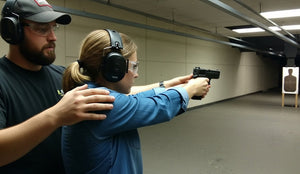It doesn’t necessarily mean there’s something wrong with your pistol. But this can be a real head-scratcher: why is your pistol shooting high?
Shooting high happens to even experienced shooters: you train hard, get consistent. Then you go, buy a new gun, you go to have all the fun at the range, bam! Every group sits up at 12 o’clock.
So what causes a pistol to shoot high? Could be your trigger pull, a sneaky thumb or support-hand pressure, sight alignment. Anticipation is also a usual suspect.
How do you tell what’s drifting your shot up? Here we’ll walk through the likely causes, as well as the quick checks and drills to get your groups back down.
Common Causes of Pistol Shooting High
Describing the problem is easy: your rounds are landing above where you aimed. We feel that frustration. New gear, a new event, and suddenly you look like a rookie. These are common pistol accuracy problems.
The first piece of advice we can give you is don’t panic. High shots are almost always fixable.
Second, you need to find why the pistol is shooting high so you can apply the right adjustments, shooting accuracy tips, and practice the correct drills.
Here are the usual causes of a pistol shooting high:
-
Sights and optics. No-brainer: check your zero. On irons a high front or low rear will print high. On a red dot, dial the elevation a few clicks at the distance you’re shooting.
-
High bore axis. Taller bore usually means more flip. If you hold a taller gun the same way as your old one, those groups can end up nearer 12 o’clock.
-
Grip angle. A different grip angle changes where your wrist naturally points. That shifts your natural point-of-aim.
-
Trigger geometry & reach. The pad placement that worked before might not line up on a compact vs. a full size, and a slightly angled pull will change impact.
-
Grip texture. Slick vs aggressive texture changes how hard you choke up or how much you squeeze. Over-gripping or slipping under recoil will change muzzle behavior and POI.
-
Backstrap and hand height. Where your hand sits on the backstrap is the pivot point for recoil. Small shifts change muzzle rise and follow-up timing — that’s why backstrap swaps can matter a lot.
Here we assume you zeroed with the same bullet weight. If you didn’t, read our ammo grain guide. Long story short: Lighter loads can sometimes push POI up, so re-zero with the ammo you plan to shoot.
If the sights are right and the pistol looks good on paper, it’s time to troubleshoot technique. Why is your pistol shooting high? Let’s diagnose.
How to Tell What Makes Your Pistol Shoot High
-
Record yourself while shooting. Put a camera at the side, and get detailed footage of your muzzle and sight recovery. Get also a close view of your hands to watch trigger path and thumb pressure. See yourself in slow motion, and pay attention to how you follow through.
-
Ask an instructor to watch. Four eyes beat two. And an experienced pair will catch the little things you don’t feel.
-
Quick swap test: lend the pistol to a buddy. If they also shoot high, it’s probably the gun (zero, sights, or ammo). If they don’t, the reason why your pistol shoots high is right when you look at the mirror.
How to Fix It: Shooting High Troubleshooting Guide

High shots usually mean something’s forcing the muzzle up at the moment of the break. And similar to what we saw on our article on how to fix your pistol shooting low, anticipation, finger placement, and grip all affect POI.
But in different ways, so let’s see how.
Adjusting Sight Alignment
The first thing we all think about when a pistol shoots high, with no apparent reason: Are sights aligned ok? A low front sight causes low impacts, and a front sight that sits a touch high in the sight picture will put rounds high.
But maybe your pistol was always working fine, until you started shooting at different distances. If you are shooting long distance, and then go to shoot 15 yards without adjusting, you can totally expect your pistol to shoot high.
Either way, you’ll need to pause, take a good look and adjust if necessary. Here’s how to do that:
-
If your rear sight is adjustable: move the rear sight down to move the impact down. This is easy.
-
If your front sight is adjustable: move the front sight up to lower the impact. Trick here: the front moves opposite.
If you’re running an optic, adjust a few clicks using our MOA guide to bring your point of impact down.
Improving Trigger Discipline
Finger placement on the trigger is quite often the cause of a pistol shooting high. You’ll hear all about different techniques, all from NRA champions: the pad, knuckle crease, even towards the tip. Different hands, different guns, so you need to figure out how you need to pull.
Too little on the trigger can push your aim upwards and to your dominant side. So if you are a rightie, your shots will go up to the right, and if you are a leftie, your shots will go up to the left.
How can we fix this? Center of the finger pad, press straight to the rear, keeping the finger aligned with the bore. This is the heart of trigger control.
Correcting Grip and Posture
If you choke the pistol to death, everything moves when you press the trigger: all the fingers, the wrist, the muzzle. So try a solid grip, use the beavertail, lock the firing hand, and bring the support hand in tight so both hands work together.
Don’t squeeze the gun. But the contrary is no good either: a limp grip lets the gun flip too much.
Before we move on with gripping technique, here’s a quick note on stance: we see a lot of beginners lock into a stiff isosceles and then watch their sights bounce up and down with a snappy gun. Tension and locked knees make the whole upper body recoil like a pogo stick.
Yes, the classic isosceles works well, it’s proven. But in some cases, when your pistol is shooting high, a tweak can help.
If you are up for it, try Modified Isosceles for better recoil management. Also, you can go for the Weaver, to get stronger push-pull recoil resistance. Just don’t overlook this, and check out our article with the best pistol shooting stances to be sure you’re doing them right.
Recoil Management Techniques
When you press the gun out instinctively many shooters often push or lift the muzzle just before the round fires. How can you tell if this is your case? Dry fire slowly, with your eyes closed. Aim, close your eyes, pull the trigger, don’t move, and open your eyes. Are your sights slightly above target?
You’ve heard it: “Let the gun do the work”. And that’s how some shooters end up on the opposite side of overgripping, actually helping the gun go up. That’s what happens when subconsciously, you push your hand up, anticipating recoil.
Riding the recoil by unconsciously “assisting” the elevation of the muzzle in anticipation of recoil “since the gun was going ‘up’ anyway.”
Also, watch out for driving the heel of your hand into the pistol grip. That’s when perhaps changing those backstraps can really help correct those high shots.
Range Practice Tips
Trigger-reset Drill
This live-fire drill teaches discipline and rhythm. Fire one shot and let the gun recoil. As the sights settle back on target, slowly release the trigger until you feel the reset click.
The instant the trigger resets and your sights are back on target, press again. Start slow, focus on smooth resets, then gradually speed up.
With the trigger reset drill you’ll build confidence in your follow-up shots, and prevent you from jerking the trigger low under pressure. Another core trigger control habit.
Ball-and-dummy Drill
Mixing dummy rounds with real ammo randomly gives you a surprise effect. When you hit a dummy round, the gun won’t fire. If you flinch, dip the muzzle, or slap the trigger, you’ll notice right away.
The Ball-and-dummy Drill is really effective when anticipation is causing your pistol to shoot high. It’s the go-to accuracy tip to retrain muscle memory, and get those shots back on target.
When to Consider Gear Upgrades
By itself, gear doesn't make you a better shooter. But if you use the right addons, like red dots and comps, they can help you fix your pistol shooting high.
Using a Red Dot
A red dot is the single most useful piece of kit for figuring out why shots are high. In dry-fire it lets you see exactly how the dot moves at the break. Dot’s let you spot that upward trigger tug, wrist rotation, or thumb pressure without burning ammo.
With live fire, this is even clearer. How the dot moves shows you muzzle flip and sight settlement in real time. If you’re testing technique, roll with a dot for a session or two and you’ll learn faster.
That’s how red dots make a huge difference for diagnosing a pistol shooting high.
Compensators to Reduce Muzzle Rise
Comps actually reduce muzzle rise and speed sight recovery. So if recoil is the main issue, they are a solid solution. You’ll need to readjust though, as they usually change POI. So re-zero and test with the ammo you’ll use.
But, once you set it right, you are up for quicker follow-ups while you retrain your trigger and grip. Just so you get the picture, one of our pistol compensators can help reduce recoil and muzzle rise by at least 60%. Basically, that’s how you turn your Canik pistol into a real flatshooter.
Upgrade Stock Sights
If you run Caniks, most likely your sights are really good. But, on some other brands, factory sights are soft, mis-set, or just bad. So, in those cases, it’s a good idea to replace stock irons with usable steel sights or a properly zeroed set will save you headaches.
And if you go dot, fit and zero it properly. Poor sights hide technique problems and make diagnosis harder. But just know that as much great optics you get, you always need to have good irons in case you need them. Proper handgun sight alignment wins in the end.
Solved: How We Fixed High Shots And Got Accuracy Back
Where to start? Well, now you know the drills to fix accuracy. All we went through here can help you figure out if it’s the sights, grip, or trigger; the why and the how.
Once you understand that, it all turns out to be easier than we thought, and accuracy comes back. Fixing your pistol shooting high will show up at the range. No more high shots. You know we are all for bullseyes here at 45 Blast.
We hope this guide helped you fix your pistol shooting high, and also encourage you to get some nice addons. If this worked out for you, you can get a 45 Blast comp and refine from there.
Because 12 o’clock? That’s just lunch time for marksmen.


